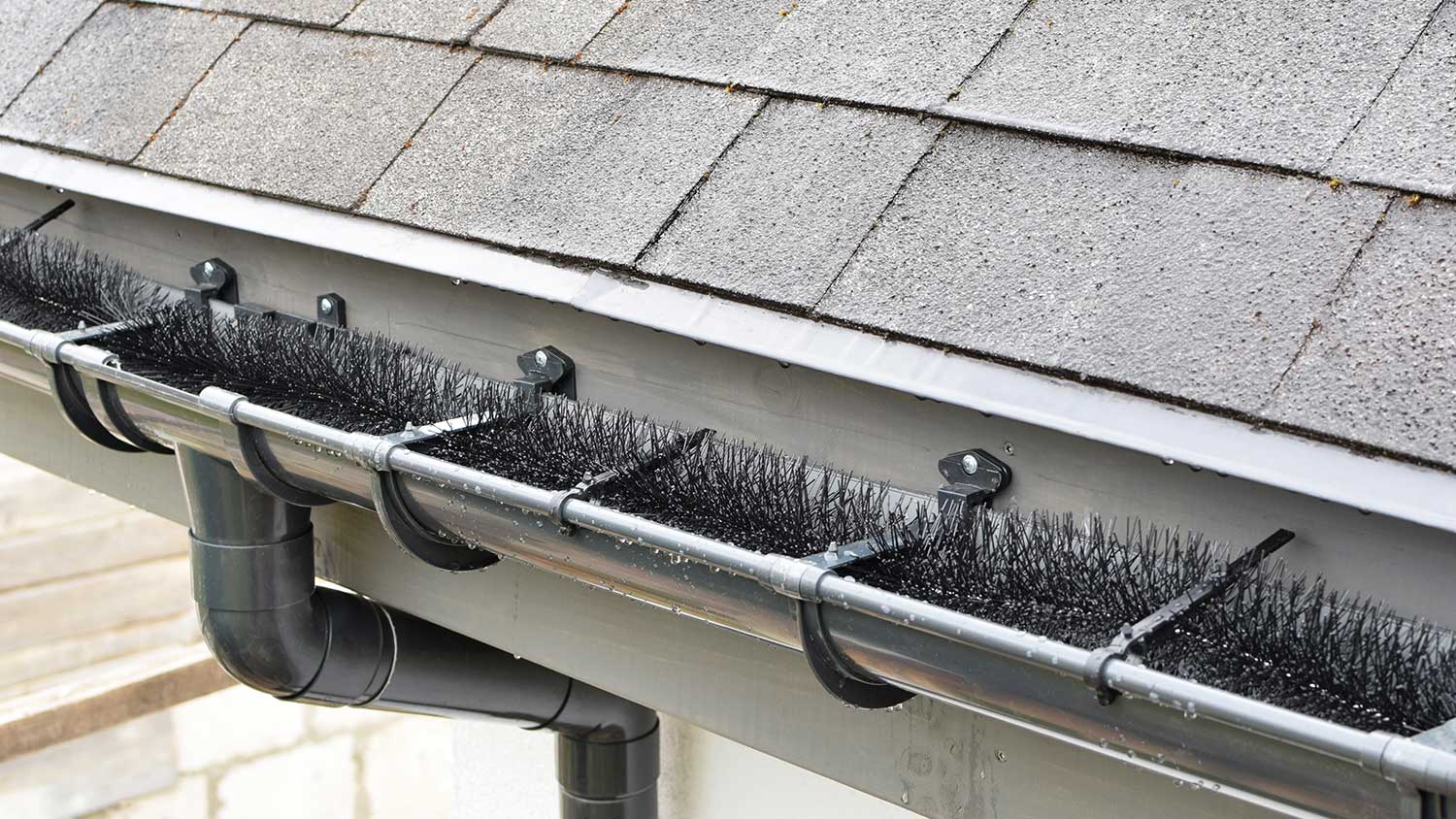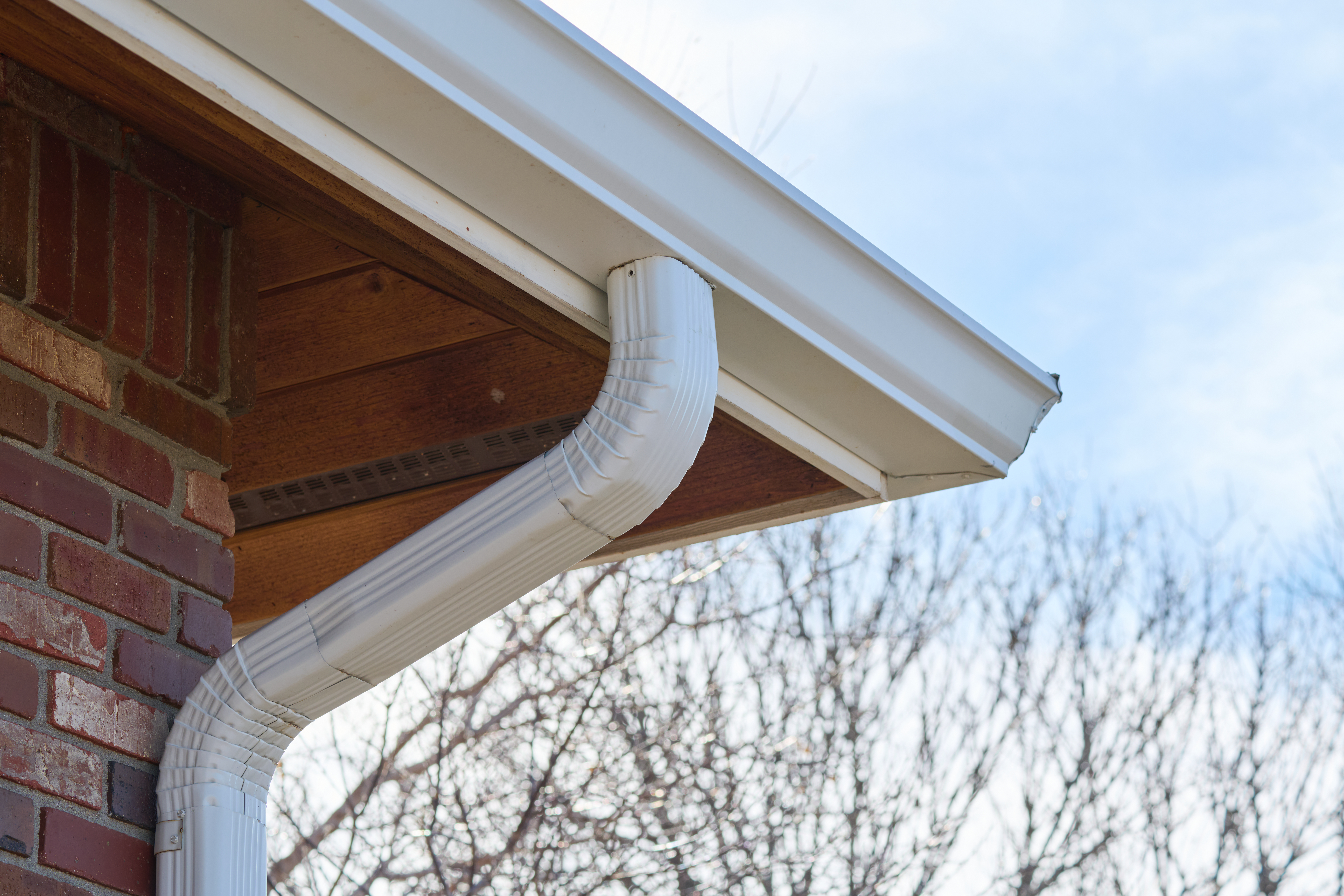
Wondering how much gutter installation costs? We’ll break down prices by material, gutter type, and other factors impacting overall gutter costs.
For some homes, the best protection is foam


Foam gutter guards can save you the hassle of frequent gutter cleaning.
Compared to other options, foam guards are affordable and easy to install and maintain.
Foam gutter guards are a better overall solution in warmer climates and areas with large debris.
You can avoid some problems if you opt for high-quality foam sponges.
Gutter cleaning is a job that is simultaneously dull and intimidating. Most homeowners would do anything to cut down on this tedious chore. But alas—foam gutter guards may save the day.
Foam gutter guards, also known as gutter sponges, act like filters that conform to the shape of the gutter and let rainwater in but keep debris like leaves and twigs out. They can cut down on how often you have to clean your gutters—if not eliminate the chore entirely. Of the types of gutter guards on the market, foam is one of the least expensive and easy to install. Is it right for your home?
When taking on this project, expect questions only a pro can answer. With our network of local pros, you'll get the job done and your questions answered—without the hassle and stress of doing it yourself.
Foam gutter guards are triangular pieces of dense but porous polyether or open-cell polyurethane foam. It’s a mouthful—we know. The wedges come in a range of sizes, up to eight feet long and six inches wide, in flexible lengths that you can cut with scissors to customize to your gutters.
By installing foam gutter guards, homeowners can bask in its many advantages that include saving time and money.
Inexpensive: Foam inserts cost an average of $2 per foot, making them the least expensive gutter guard system besides vinyl grids and metal mesh screens.
Easy installation: Designed to conform to the shape of your gutter, foam gutter guards simply need to be cut and placed—a cinch even for those with minimal DIY experience.
Simple cleaning and maintenance: Unless you live in a heavily wooded area, foam gutter guards will only need to be wiped down with algaecide and cleaned once or twice a year.
Low profile: Unlike some other types of gutter protection systems, many foam gutter guard products are invisible from the ground, preserving your home’s curb appeal.
Like any home improvement solution, foam gutter guards present their own set of disadvantages.
Not ideal for all climates: While foam gutter guards act as a sponge, absorbing rain to drain into your gutter while filtering out debris, in areas that experience heavy rainfall, it can quickly become clogged, allowing water to pass over the gutter and potentially damage your foundation.
May need to be removed in winter: If you live in a place that receives freezing winter temperatures, you may need to remove your foam gutter guards each winter and replace them every spring. When frozen gutter guards unthaw, they can become the perfect spot for moss and weeds.
Short lifespan: Foam gutter guards are not a permanent solution. Even the highest-end models last a maximum of three to five years. Models that do not feature UV coating will crack or shrink before that as well.
Can attract roof oil: A petroleum-based product, foam gutter guards will naturally retain other petroleum products, including roof oil.
Lower cost models can be dangerous and ineffective: Because there are a number of low-cost and unreliable versions on the market, foam gutter guards have gotten a bad rap in some quarters. In the worst-case scenario, products that do not include a fire retardant can pose hazards to your family. Less dramatically, lower-quality foam gutter guards can retain small needles, seeds, and other small debris, leaving a layer of muck that can rot and adding additional, gutter-straining weight. In other cases, they can leave enough space for mosquitoes to breed.
Foam wedges are but one of many gutter protection products on the market. Here’s how they stack up against their most significant competitors.

Brush covers are balls of bristles placed into your gutters, similar to foam guards. Brush covers tend to accumulate debris over time and need frequent cleaning. Similar to foam, they can pose risks in freezing temperatures. On the plus side, they prevent rusting by allowing air to circulate freely.
There are a number of different screen-style gutter guard products, usually consisting of a metal sheet with perforated holes. Of this type, micro mesh gutter guards, featuring thousands of tiny holes, most reliably let moisture through while blocking out all but the smallest other materials. You’ll likely want to hire a gutter guard pro to install a micro mesh gutter guard. They’re more expensive than alternatives and require frequent maintenance. Overall though, they are probably the most effective and durable product on the market, especially if you’re dealing with pine needles and other kinds of fine debris.
The oldest style of gutter guard, reverse-curve guards are contoured pieces of plastic or metal placed along the edge of the gutter, allowing the water to flow in while forcing leaves to slide off the roof. Like foam guards, they reliably prevent larger debris from entering the gutter—but they are more expensive, require professional installation, and are visible from the street, lowering curb appeal.
Every gutter protection solution poses some potential problems. Finding the one that’s right for you will depend on the environment surrounding your house and selecting the right product.
If you live in an area where your roof will collect significant amounts of dust, pine needles, or other small debris, you will be better served by micro mesh than foam. If you live in a climate that gets freezing winter temperatures, you will be best served by foam if you remove it during the winter—so just factor in that biannual chore to your calculation.
High-quality foam gutter guards feature coatings that prevent the growth of moss and insect larvae, as well as resist fire and UV rays. Products that don’t boast of these features may be susceptible to those risks. Make sure to select the width that matches your gutter—and replace the foam wedges every three to five years as required.
From average costs to expert advice, get all the answers you need to get your job done.

Wondering how much gutter installation costs? We’ll break down prices by material, gutter type, and other factors impacting overall gutter costs.

Are gutter guards worth it? The average gutter guard installation cost is $650 to $2,000 but varies depending on types, materials, home height, and other factors.

Learn about the average cost of zinc gutters when having new gutters installed at your home. Long-lasting zinc gutters can cost twice as much as aluminum gutters.

This guide to how to cut gutters details the tools, supplies, and steps needed to fit custom gutters to your house.

Understand what a downspout does, why they’re an essential piece in your gutter system, and how to clean and upkeep your downspouts.

Have you noticed overflowing gutters when it rains? Here are five common problems that could be causing the deluge of water and what you can do about it.